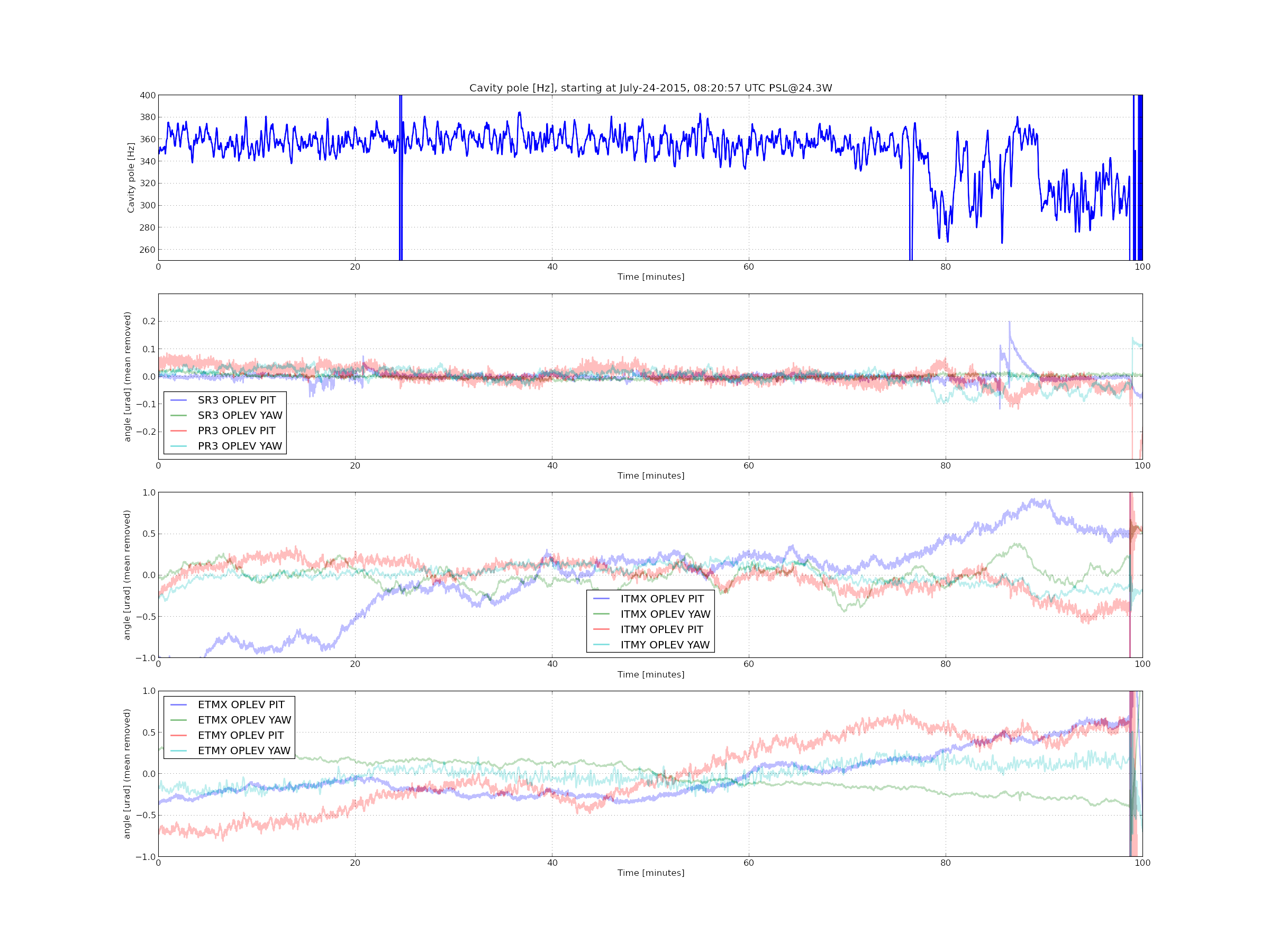I turned on the 530-545 notch in FM7 of ETMY L3 LOCK, and switched to ETMY with the ESD low pass on. As the alogs of Evan and Rana suggested, by notching the pcal lines in the drive to ETMY we can engage the low pass and still have a rms of about 3000 counts on the ESD. (screen shot of ETMY drives attached).
The resulting DARM spectrum seems slightly better at around 50-80 Hz. Things are worse below 20 Hz because I increased the gain of DHARD YAW. We can see if we are at least stable at high power with this increased gain for DHARD, and then worry about the 20 Hz noise.
We had one of the huge glitches that we have been calling beam tube glitches, at around 8:15 UTC July 24th, even though no-one is cleaning the beam tubes. I've hit the intent bit and an leaving the IFO locked.
There is currently a descrepancy of about 25 Mpc between the range displayed in the control room and the range on the summary pages.
This lock has lots of glitches at harmonics of ~505 Hz. We've seen this before, and it seems to be some kind of upconversion of the violin modes. I checked to see if these were caused by overflows in the ETMY L3 DACs. I also checked the L2 DACs on both ETMs, and a bunch of photodiodes (DCPD, POP_A, and many ASC). The only DAC/ADC overflows on any of them were during two isolated incidents or at the last second of lock. So the 505 Hz harmonics are not related to saturations in any of these. I did find that the ETMY L3 DACs started to saturate about a minute before the end of the lock. There are two isolated times in the middle of the lock with overflows, 1121762742 and 1121765852, that detchar should look into.
Here is some data from the cavity pole tracker (alog 19852) from the lock stretch of the last night ( which lasted for approximately 100 minutes):
The pole frequency was stable in the first 75 minutes or so. Then the pole frequency dopped by 50 Hz. Then it became unstable for the rest of 20 minutes, followed by a lock loss at the end. There were two glitches in the estimated cavity pole, one at 25-ish min and the other at 75-ish minutes. At the beginning, I thought they were related to the SR3 optical lever which also showed some glitchy behavior. However the cavity pole and SR3 oplev don't look coincided. So the glitches in the cavity pole must have been driven by something else.
Interestingly, after 75 minutes, the cavity pole seemed to start correlating with motion in PR3 yaw -- as PR3 oplev yaw went down the cavity pole also went down and vice versa. On the other hand I did not see a clear correlation of the cavity pole with test mass oplevs.




